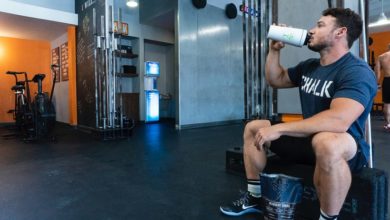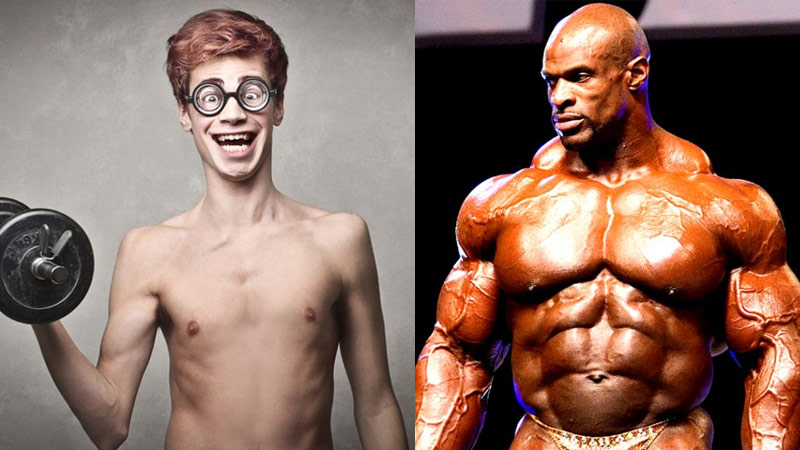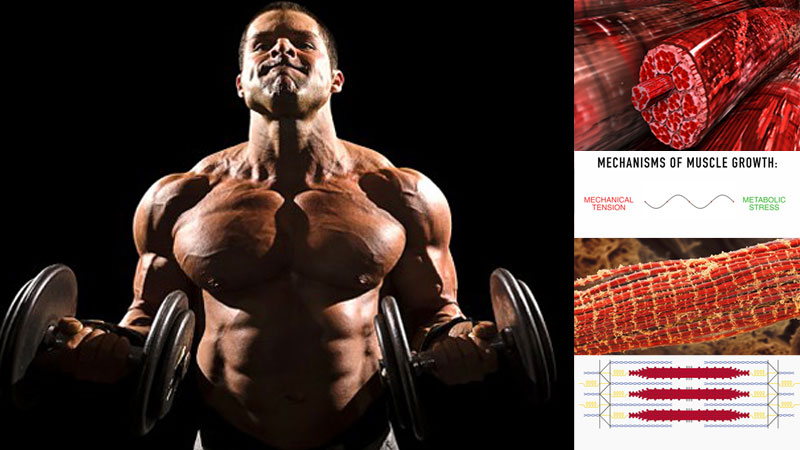
The more you know, the more you grow. Taking the time to learn about how to cause mass building helps to grow a strong foundation for solid training.
Building knowledge around the science behind strength and muscle training doesn’t mean you have to hand in your bro card and hanging out with the nerds.
There’s nothing wrong with being a bro in the know. And while most science guys are weedy Professor Frinks that even pushing their thick-rimmed glasses to the bridge of their noses is a one rep max, they have got one thing right:
Knowledge is power.
And power is gainz.
If you want to know more about how to cause muscle hypertrophy and harness the power of real science in your quest for more mass, read on brah…
What is Muscle Hypertrophy?
The real name for ‘muscle growth’, ‘building mass’, ‘getting goddamn yolked’ and ‘swole as fuark ‘ is…
Muscle hypertrophy.
We’ll talk a little more about exactly how muscle hypertrophy occurs later on, but for now all you need to know is that hypertrophy refers to the enlargement of an organ or tissue.
Muscle hypertrophy refers to the increase in muscle size.
Renal hypertrophy refers to kidney enlargement
…and maybe penile hypertrophy refers to the girth gainz you get from those late night infomercial gadgets you stick on your end piece. Who knows?
Anyway, we digress.
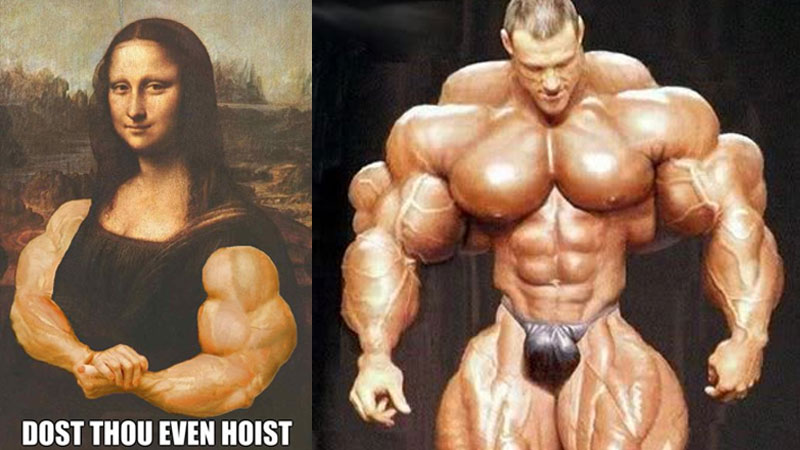
Muscle hypertrophy: The story begins with fibers
It’s pretty well known that lifting weights gets you jacked. We’d be surprised if you didn’t know that already though.
The chances are though you don’t know the entire story about how muscle grows, After all, there are literally hundreds of studies you’d have to read to truly understand what’s going off.
Luckily, we’ve donned our whit lab coats and channeled our inner nerd to condense down the basics and give you a running start.
So don’t worry, there’s no journal subscription needed here.
Muscles are made up of fibers and lots of other stuff
All 600 or so of your skeletal muscles are made up of fibers. A bit like how rope is made up of individual strands of nylon fibers.
These fibers are encased within individual bundles of functional tissue that are compacted end to end and enclosed within various layers of connective tissue.
If you were to steal your nephew’s science kit for an hour and look at these muscle fibers through his microscope (yeah okay, you probably need one a bit stronger than a third-graders science kit) you’ll see a ton of stuff going off.
Each muscle fiber is made up of smaller protein filaments that wrap around each other like DNA. And they’re enclosed within a small unit called a sarcomere. These filaments have the ability to shorten the length of the sarcomere when they pull and contract against each other.
From one end of the muscle to the other are loads and loads of sarcomeres in a line – like cars in a traffic jam. They also stack up on top of each other too – much like if the traffic jam was on a multi-lane highway.
When a muscle wants to contracts (say if you were doing a bicep curl), all of the sarcomeres in that row of traffic shorten. They pull against each end of the limb and the result is that the bicep shortens and bunches up (think bicep pose).
And when you relax, the sarcomeres lengthen again.
Sarcomeres are made up of not just filaments, but fluid and various types of cells too. they are complex compartments that are hugely important when it comes to building actual muscle.
Okay, at this stage you might be thinking, why the hell is this relevant if I just want to get jacked and build some panty-dropping mass?
Well here’s why…

Muscle hypertrophy is caused by changes to muscle tissue
Lifting weights is obviously hard work.
And of course the more you do it, the bigger your muscles get.
In simple terms, that’s what happens. But as the now budding scientist that you are, you’re thirsty to know more.
Essentially, exercise stresses your muscles, forcing them to adapt by growing bigger and stronger. These changes take place on a minute cellular levels, and over time, result in noticeable differences to overall aesthetics.
The mechanisms of muscle hypertrophy
When it comes to muscle science, it’s been theorized that hypertrophy can occur in three distinct ways.
- Mechanical tension
- Metabolic stress
- Muscle damage
Mechanical tension
This refers to direct changes to the filaments within each sarcomere, due to mechanical forces on muscle tissue itself. When you increase the mechanical force (the load you lift for a given rep range), you increase ‘mechanotransduction‘. This triggers some chemical signalling changes that result in growth of muscle filaments.
Basically, lift heavy and muscle grows.
Working hard to lift heavier weights helps to increase mechanical tension. This falls in line with the principles of progressive overload and should form the basis of your strength program to cause muscle hypertrophy.
[infobox]Bro Point: Mechanical tension is optimized when heavier weights are used within a given number reps. Longer rest periods help to keep the load high and productivity maximized.
[/infobox]
Metabolic stress
Unlike mechanical tension, metabolic stress is more to do with the build-up of by-products in the muscle cell during weight lifting.
These include things like hydrogen and inorganic phosphates.
The various metabolite by-products have an effect on muscle hypertrophy by causing cellular swelling, elevated anabolic hormone levels, increased muscle fiber fatigue and indirect influence on muscle remodeling.
If you’ve ever found yourself in the cruel position of a high-volume leg day where your quads feel like they are literally on fire, you’ll know exactly what we mean by metabolic by-products!
[infobox]Bro Point: Metabolic stress is maximized when high-volume training with minimal rest periods is used.
[/infobox]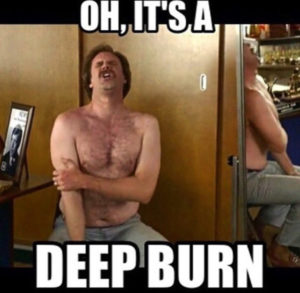
Muscle damage
This is probably the most controversial mechanism when it comes to muscle growth. Because there are arguments both for and against i being a contributing factor in hypertrophy. The muscle damage principles suggest that weight training disrupts the microstructure of muscle cells.
Imagine the sarcomere as a lovely woolly jumper that your grandma gave you one thanksgiving.
It’s knitted together using individual wool fibers. If you place tension on it by pulling and pushing at your new jumper, some of those fibers will break and split – and that disrupts the tensity of the overall jumper.
It becomes misshapen, baggy and less sturdy.
That’s basically muscle damage. And to fix it, you have to build those fibers back up.
Much like metabolic stress, hypertrophy caused by muscle damage is triggered by numerous chemical alterations such as inflammation and hormonal changes, as well as cell swelling.
[infobox]Bro Point: Metabolic damage is a compensatory response to the microscopic tissue disruptions caused by strength training.
[/infobox]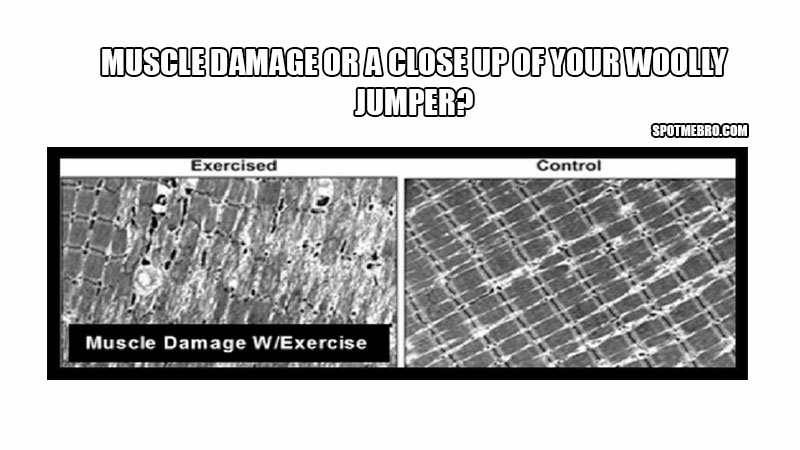
In Summary :
Okay, this is some deep science shiz bro. But hopefully you’ve followed it and understand that there are different ways in which you can grow muscle.
Muscle hypertrophy isn’t a one-size-fits-all approach. But one thing we do know is that mass building is caused by different mechanisms that relate to the way in which you train.
If you lift heavy you’ll grow. If you smash a high-volume sets you’ll grow. You just trigger different different metabolic pathways is all.



